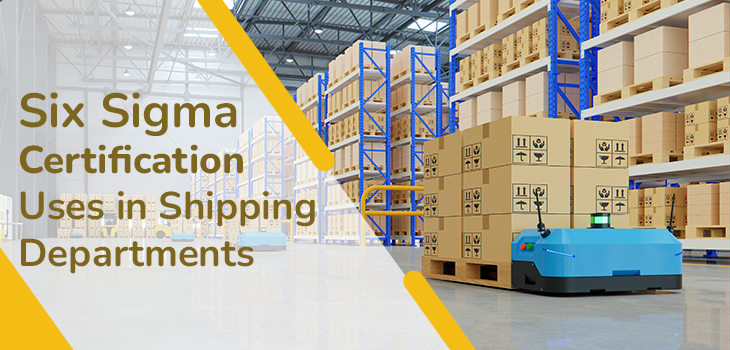Six Sigma Certification Uses in Suppliers and Shipping Departments

Organizations that once viewed Six Sigma and Lean as separate and potentially competitive methodologies are now finding that these two quality improvement philosophies are complementary. When used together (Six Sigma) they can be a great way to eliminate waste and supply chain disparities.
Six Sigma certification online can help improve supply chain efficiency in the following areas.
- Flawless Order Execution - Measured by the percentage of orders that fulfil delivery execution with complete and correct documentation and no damage during shipping. The Six Sigma methodology can help maximize order fulfilment by identifying potential problems such as outdated planning processes and inefficient execution systems. Lean can then be used to address areas of waste and increase productivity.
- Reduce Order Execution Cycle Time- A Six Sigma review of an organization's order execution system helps identify issues that need to be addressed. This review is likely to conclude that some clear improvements are needed. Upgrades may require system integration, automated retrieval, automated delivery planning, automated delivery verification, and reduced documentation. The Six Sigma DMAIC cycle can help improve ongoing processes; DMADV can help implement new processes.
- Increase supply chain agility –Supply chain efficiency requires responding quickly to changes in supply and demand through the ups and downs of the business cycle and during times of crisis. Companies with the most agile supply chains are companies that meet customer needs. The specification of customer critical quality requirements (CTQ) in the definition phase of Six Sigma helps companies to establish customer orientation and thus flexibility in their supply chains.

- Zero Defects - Any supply chain that loses efficiency due to high levels of defects in the system is a prime candidate for improvement. The poka-yoke or lean error protection approach prevents errors by forcing the user to perform a task in a certain way. For example, lawn mowers already have a safety bar that must be activated before the mower is started. The lawn mower will stop when the seat belt is removed.
- Implementing the 5S methodology –Sort, Match, Shine, Standardize, and Maintain – also reduces errors that hinder supply chain efficiency by creating a clean, safe, efficient and clutter-free environment.
- Zero Waste -The Lean methodology is designed to eliminate waste, which can be defined as activities that do not add value to the product or the customer. Six Sigma certification helps supply chains operate more efficiently by targeting and eliminating value-added processing:
- Overproduction -Producing more than demand because speculative forecasting results in high inventory costs.
- Transportation – Unnecessary movement of materials increases production costs and cycle times. Lean strives to eliminate unnecessary transportation.
- Value-Added Processing -Poorly designed production facilities lead to extra work that does not add value to the product. Lean simplifies production so supply chains work more efficiently.
Increased Revenue – Companies that use Lean Six Sigma to make their supply chains more efficient can offer their customers a consistent level of service. Reliable service helps to make your customers satisfied and helps companies in achieving greater cost efficiency with increased sales.
Organizations that apply Six Sigma certification principles to their supply chains can create competitive advantages, increase sales, and boost employee morale.
Past Events
-

-
 2022-06-28 11:24:37 Lean Six Sigma Principles to Adopt Immediately for Business Growth in 2022 events
2022-06-28 11:24:37 Lean Six Sigma Principles to Adopt Immediately for Business Growth in 2022 events -

-

-

-

-

-

-

-
.jpg)
-

-
.webp)
-

-
 2022-03-12 13:57:16 Top 10 Reasons Why You Should Go for Six Sigma Green Belt Certification in 2022 events
2022-03-12 13:57:16 Top 10 Reasons Why You Should Go for Six Sigma Green Belt Certification in 2022 events -

-

-

-

-

-

-

-

-

-

-

-

-

-

-

-

-

-

